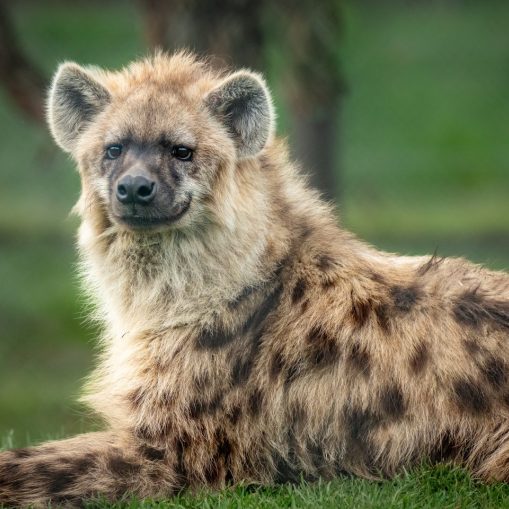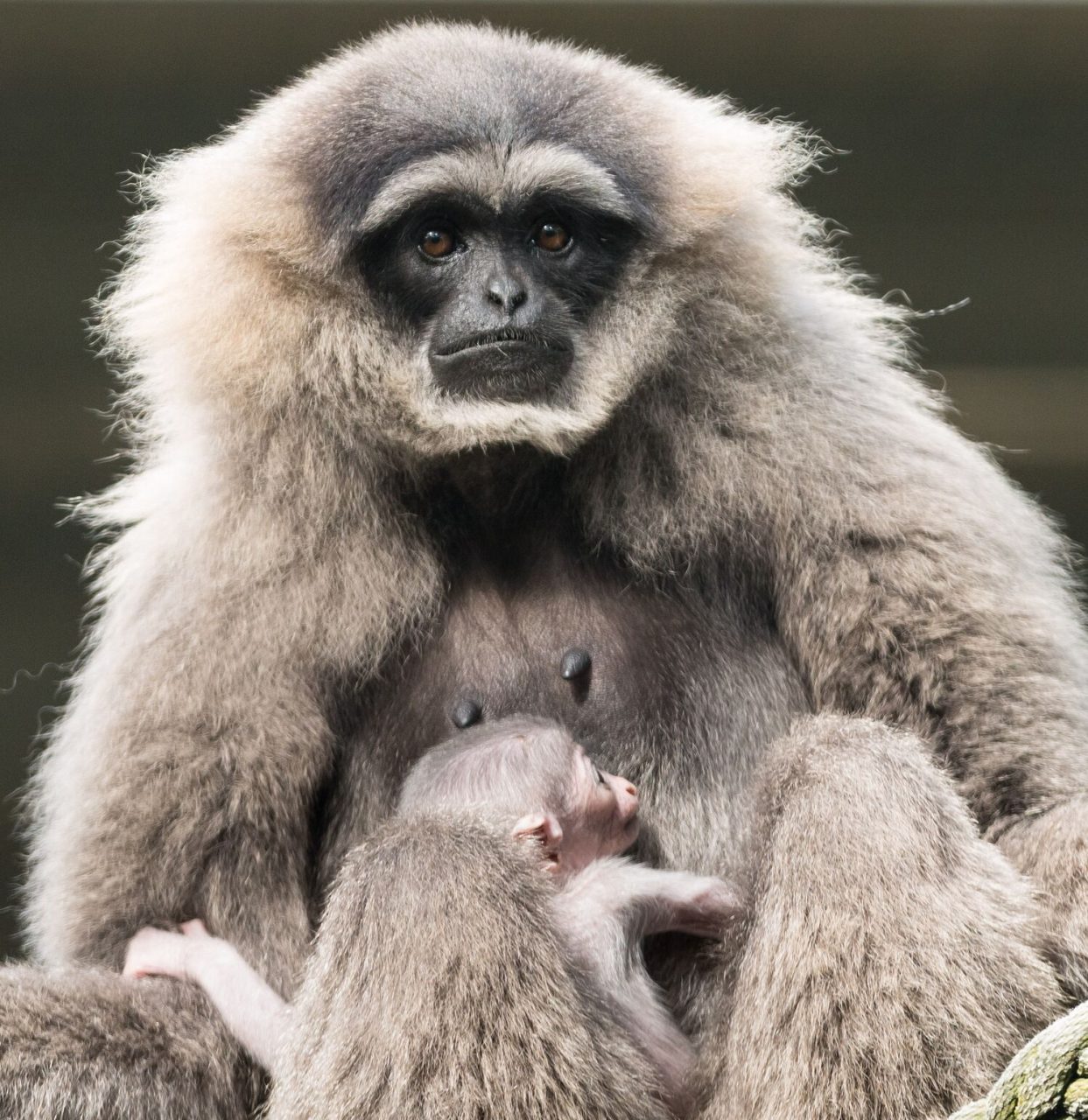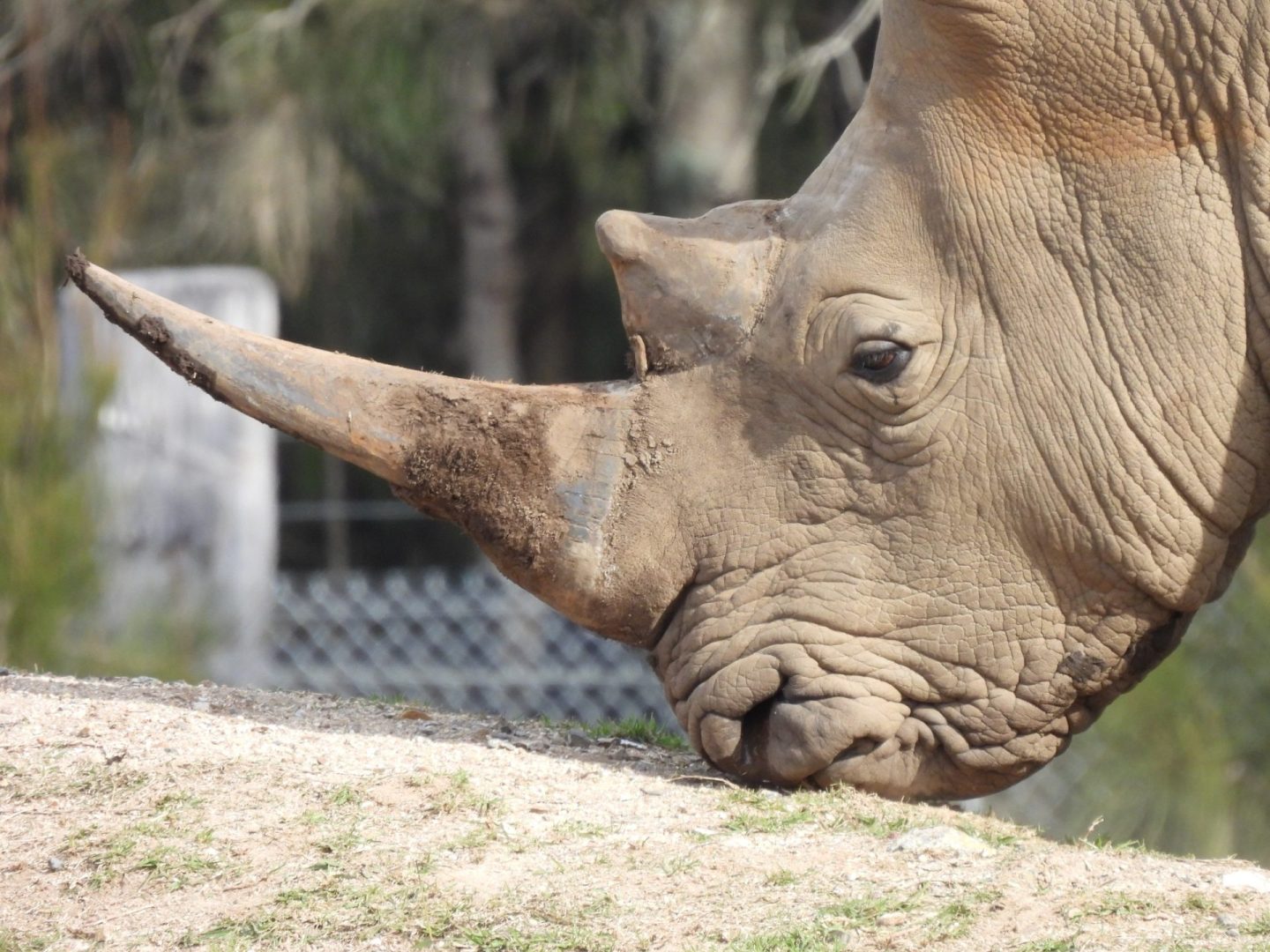Spotted Hyena
SPECIES: Crocuta crocuta



The Spotted Hyena has a spotted coat and is the largest of the four hyena species. The hyena has a large head, large ears, long front legs and shorter back legs with a back that slopes down from the shoulder to the tail. It can be difficult to distinguish the females from the males. Females are also larger than the males.
Diet
Hyenas are carnivores and eat a wide range of animals, including wildebeest, zebra, gazes dinesire rebirds. Spotted Hyenas will steal prey from cheetah or even lions if they are in a pack. They are also very good scavengers and their digestive system allows them to eat all parts of the animal—meat, skin and bone.
Social
A Hyena's gestation period is on average 110 days, with the average litter having 2 cubs. Cub are born with soft brownish black hair and weigh about 1kg. Spotted hyena cubs are born with their eyes open and will nurse for 12-16 months, though they can process solid fools as early as 3 months old and will be participating in hunts within their first year.
ANIMAL FACTS
Spotted Hyena
GROUP NAME
Cackle, pack or clan
SIZE
40-85 kilos Up to 160cm long
BABY NAME
Cub, pup or whelp
Habitat
The Spotted Hyena is found in most African habitats, with an estimated global propuatios andetween 27,000 and 47,000. These mighty carnivores live and adapt to a variety of habitats from open grasslands, dry semi-desert, forest areas and the acacia bush.

Did You Know?
Hyenas are one of the few creatures where females are generally heavier than their male counterparts
MEET OUR
ANIMAL FAMILY

stay in touch with Your Australian wildlife parks family
Stay up-to-date and subscribe to our newsletters
Your information is only utilised by Australian Wildlife Parks. For more information see our privacy policy.
MOGO Wildlife Park acknowledges Aboriginal people as the traditional custodians of the land on which our offices and operations are located, and we pay our respects to Elders past, pres ent and future.
© 2019-2024 Australian Wildlife Parks • Privacy Policy • Disclaimer














